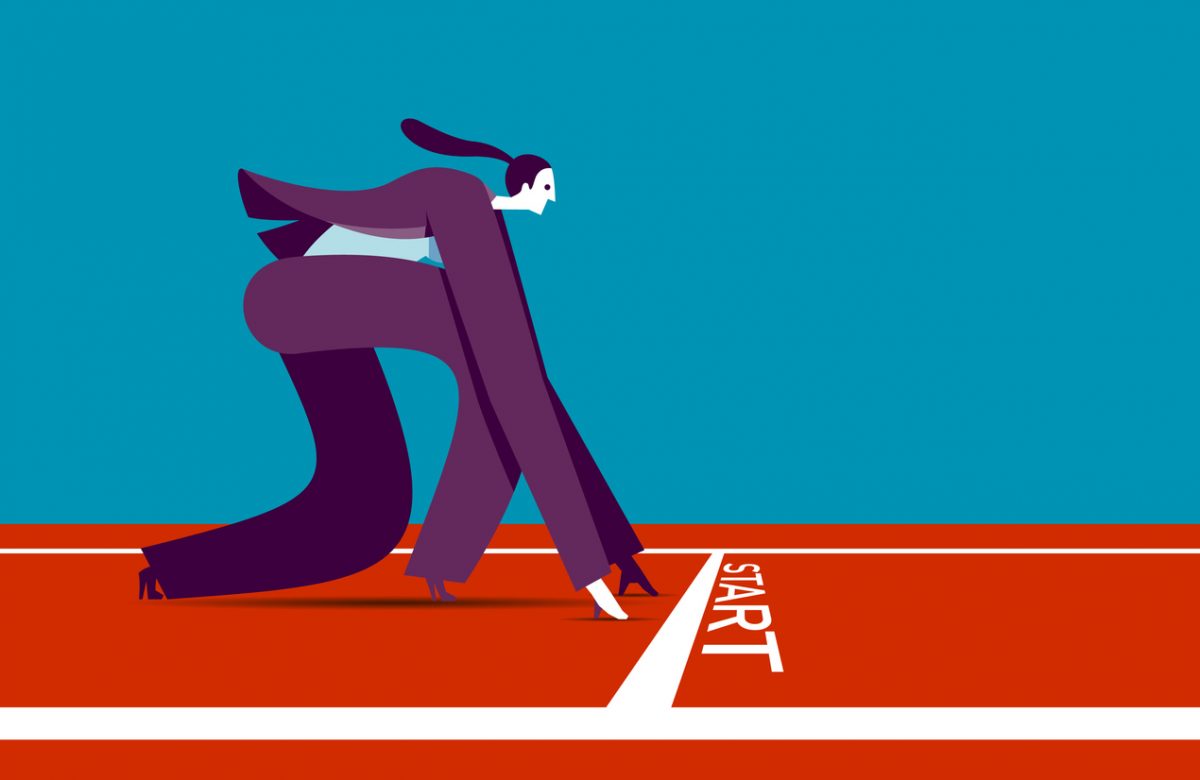Dopamine receptor blocking agents—including antipsychotics—can produce tardive dyskinesia (TD). First-generation antipsychotics were effective in treating schizophrenia and severe forms of bipolar disorder; however, they were associated with substantial extrapyramidal effects, especially at high doses. Second-generation antipsychotics are effective and produce fewer adverse movement effects; nevertheless, the risk for TD was not eliminated. Tardive dyskinesia can be distressing to patients with good insight into their illness and the movements, especially if they are working and in relationships, and should be treated to improve psychosocial outcomes. In patients with poor insight into their illness and lack of awareness of their TD symptoms, clinicians should treat TD if it causes severe impairment.
From the Series: Early Recognition and Treatment of Tardive Dyskinesia in Patients With Mood Disorders and Schizophrenia
To cite: McEvoy J. Psychosocial implications of tardive dyskinesia in patients with mood disorders versus schizophrenia. J Clin Psychiatry. 2019;80(6):NU18041BR2C.
To share: https://doi.org/10.4088/JCP.NU18041BR2C
© Copyright 2019 Physicians Postgraduate Press, Inc.
Target Audience
Psychiatrists, neurologists, nurse practitioners, and physician assistants
Learning Objectives
Address psychosocial concerns related to TD in patients with mood disorders and schizophrenia
Support Statement
Supported by an educational grant from Neurocrine Biosciences, Inc.
Learning Objective
After completing this educational activity, you should be able to:
- Address psychosocial concerns related to TD in patients with mood disorders and schizophrenia
Statement of Need and Purpose
Because some clinicians underestimate the risk of TD, especially with newer antipsychotics, they do not advise patients and caregivers of the risk of TD or educate them about early signs to watch for and report. A substantial proportion of patients with TD do not have a timely diagnosis. Clinicians may not recognize early TD symptoms, as mild cases may be more easily missed. Due to TD movements, patients may stop taking their treatments for mood disorders or schizophrenia. Clinicians may inaccurately rate how bothersome side effects are to patients. New medications for TD are available, and evidence-based treatment recommendations have been published. Recent research has explored longer-term safety and efficacy with newer medications. Clinicians need up-to-date guidance on the prevalence of TD, risk factors for TD, recognition of early signs and symptoms of TD, and assessment tools that will help them diagnose and monitor TD. They also need education about discussing TD risk and signs with patients and family members and should be aware of the burden of TD for patients and families. Up-to-date, evidence-based, expert guidance should be provided on using new medications to treat TD in patients with mood disorders and schizophrenia, including longer-term use. This activity was designed to meet the needs of participants in CME activities provided by the CME Institute of Physicians Postgraduate Press, Inc., who have requested information on TD.
Release, Expiration, and Review Dates
This brief report activity was published in October 2019 and is eligible for AMA PRA Category 1 Credit™ through October 31, 2021. The latest review of this material was August 2019.
Disclosure of Off-Label Usage
Dr McEvoy has determined that, to the best of his knowledge, no investigational information about pharmaceutical agents that is outside US Food and Drug Administration–approved labeling has been presented in this activity.
Review Process
The faculty member(s) agreed to provide a balanced and evidence-based presentation and discussed the topic(s) and CME objective(s) during the planning sessions. The faculty’s submitted content was validated by CME Institute staff, and the activity was evaluated for accuracy, use of evidence, and fair balance by a peer reviewer who is without conflict of interest.
Acknowledgment
This activity is derived from the teleconference series “Early Recognition and Treatment of Tardive Dyskinesia in Patients with Mood Disorders and Schizophrenia,” which was held in April—July 2019 and supported by an educational grant from Neurocrine Biosciences, Inc. The opinions expressed herein are those of the faculty and do not necessarily reflect the opinions of the CME provider and publisher or the commercial supporter.
Faculty Affiliation
Joseph P. McEvoy, MD
Medical College of Georgia, Augusta
Financial Disclosure
The faculty for this CME activity and the CME Institute staff were asked to complete a statement regarding all relevant personal and financial relationships between themselves or their spouse/partner and any commercial interest. The CME Institute has resolved any conflicts of interest that were identified. No member of the CME Institute staff reported any relevant personal financial relationships.
Dr McEvoy has received grant/research support from Takeda, Alkermes, Boehringer Ingelheim, Teva, Neurocrine, and Otsuka; has received honoraria from Neurocrine; and is a member of the speakers/advisory boards for Merck, Neurocrine, and Alkermes.
Accreditation Statement
The CME Institute of Physicians Postgraduate Press, Inc., is accredited by the Accreditation Council for Continuing Medical Education to provide continuing medical education for physicians.

Credit Designation
The CME Institute of Physicians Postgraduate Press, Inc., designates this enduring material for a maximum of 0.50 AMA PRA Category 1 Credit™. Physicians should claim only the credit commensurate with the extent of their participation in the activity.
Note: The American Nurses Credentialing Center (ANCC) and the American Academy of Physician Assistants (AAPA) accept certificates of participation for educational activities certified for AMA PRA Category 1 Credit™ from organizations accredited by the ACCME.
To obtain credit for this activity, study the material and complete the CME Posttest and Evaluation.
MOC Approval Statement
Through the American Board of Medical Specialties (“ABMS”) ongoing commitment to increase access to practice relevant Continuing Certification Activities through the ABMS Continuing Certification Directory, Psychosocial Implications of Tardive Dyskinesia in Patients With Mood Disorders Versus Schizophrenia has met the requirements as a MOC Part II CME Activity (apply toward general CME requirement) for the following ABMS Member Boards:
MOC Part II CME Activity
Psychiatry and Neurology
Available Credit
- 0.50 AMA PRA Category 1 Credit™
- 0.50 Participation
In the early phases of severe mental illness, psychosis results from excessive, unmanaged dopamine release into the limbic and striatal circuits that assign importance to sensory experience and intrapsychic life. The psychopathology associated with these “dopamine storms” may be accompanied by agitation and disruptive behaviors. Antipsychotic medications bind to dopamine D2 receptors in these circuits, shielding them from the excessive dopamine release and thereby reducing positive psychopathology (ie, disorganized thinking and behavior, delusional beliefs, hallucinatory experiences) and agitation.1 However, these medications—known as dopamine receptor blocking agents—are not specific to the sites that subserve psychotic experience. They will also bind to D2 dopamine receptors in movement-related circuits and can, therefore, produce a variety of adverse movement effects, including bradykinesia, rigidity, restlessness, dystonia, and tremors (AV 1).2
AV 1. Dopamine Receptor Blocking Agents’ Therapeutic and Adverse Effects
Based on Stahl.2
First-Generation Antipsychotic Medications
FGA medications, such as chlorpromazine and haloperidol, are strong dopamine D2 receptor blockers and first became available in the 1950s.3 Initially, FGAs were prescribed to treat people with schizophrenia and severe variants of bipolar disorder, such as those with psychotic features or whose illness was refractory to agents like lithium. However, the efficacy of these FGAs was incomplete, as many patients had persistent positive psychopathology often accompanied by aggression, violence, self-injury, and suicide attempts.
When FGAs first became available, the dose-response relationship was not fully understood. It is now known that higher doses of FGAs do not result in increasing therapeutic benefits: the therapeutic effect climbs quickly and then levels off.4 However, increasing FGA doses produces more severe extrapyramidal movement-related adverse effects.5 At the time, clinicians used high doses and accepted the coarse extrapyramidal side effects (ie, movements that were obvious even to lay people) as necessary to reduce positive psychopathology.3 The D2 dopamine receptors targeted by FGAs reacted to dopamine deprivation by becoming hypersensitive, excessively reactive, and capable of initiating abnormal involuntary movements, ie, tardive dyskinesia (TD). With patients’ prolonged exposure to excessive doses of FGAs, TD became common, severe, and often grossly disfiguring.
To counter acute extrapyramidal side effects, clinicians prescribed anticholinergic medications.6 However, anticholinergic medications only mask extrapyramidal side effects. They do not alleviate the underlying alterations in the motor circuits, nor do they offer protection from the development—nor alleviate the severity—of TD.
 Patient Perspectives
Patient Perspectives
Individuals living with TD have described their impairments due to the condition.
Second-Generation Antipsychotic Medications
A major shift occurred with the development of SGA medications. Clozapine was first available in the United States in the 1980s and was efficacious against positive psychopathology and agitation in patients who had treatment-resistant positive and affective psychopathology and agitation. In addition, clozapine did not produce extrapyramidal effects, including TD. Early studies showed that clozapine relieved severe forms of TD that appeared with FGAs.7 However, clozapine has multiple significant side effects, including agranulocytosis and myocarditis, that complicate its use.8
Clozapine blocks serotonin from the 5HT2 receptor, which lessens the capacity of dopamine receptor blockade to produce coarse extrapyramidal effects. Subsequent SGAs were developed to mimic the strong 5HT2 receptor blockade of clozapine but coupled with either a lower dopamine D2 receptor blockade due to low dosing (as with low-dose risperidone or olanzapine) or a dopamine D2 partial agonism that protected the D2 receptors from dopamine storms while delivering a physiological level of dopamine receptor stimulation (as with aripiprazole). As a result, SGAs produce fewer and less severe early extrapyramidal adverse effects, resulting in fewer, and less often severe, cases of TD.
Expanded Use of SGAs
Clinicians recognize the improved tolerability of SGAs for the treatment of affective disorders. In manic and depressive exacerbations of bipolar disorder, augmentation of a mood stabilizer, such as lithium, with a low-dose SGA has led to more rapid remission and a greater percentage of patients achieving remission.9 In maintenance treatment of bipolar disorder, augmentation with a low-dose SGA delays or prevents relapse versus treatment with a mood stabilizer alone.10 In patients with recurrent major depressive disorder who have had an inadequate therapeutic response to antidepressants, augmentation with a low-dose SGA significantly increases the likelihood of remission versus treatment with antidepressants alone.11
Treatment algorithms for bipolar disorder and depression now make low-dose SGAs a second step after initial lithium treatment for bipolar disorder or antidepressant treatment for major depression.12,13 While TD occurs less frequently and is less severe in patients treated with the SGAs than FGAs, the risk is not zero.14 Estimates of annualized TD incidence are 6.5% with FGAs and 2.6% with SGAs.15 Because the risk of TD was not eliminated with SGAs, and because the SGAs are prescribed for more patients than the FGAs were, TD is still a common occurrence; clinicians must educate patients about and monitor for early signs of TD.
Tardive Dyskinesia in Patients With Schizophrenia and Severe Bipolar Disorder
Many patients with schizophrenia and some with severe bipolar disorder demonstrate multiple deficits in addition to psychosis and agitation. These deficits can include negative psychopathology, neurologic soft signs, and a lack of insight into their illness (AV 2).16–19 Fixed deficits are associated with reduced brain volume and poor occupational and social functioning.20 Dopamine receptor–blocking agents offer no therapeutic benefit for fixed deficits. Tardive dyskinesia is more common and severe in patients with fixed deficits; nevertheless, these patients tend to be unaware that they have abnormal involuntary movements, in the same way that they are unaware of their mental illness and need for treatment.21
AV 2. Deficits That May Be Experienced Among People With Schizophrenia or Severe Bipolar Disorder
In patients with lack of insight into the presence of TD, motivation to treat it is determined primarily by the Abnormal Involuntary Movement Scale (AIMS) exam,22 specifically items 8 (severity of abnormal movements overall) and 9 (incapacitation due to abnormal movements). Family members or other significant people in the patient’s life may also advocate for treatment. If the movements are disfiguring or interfere with the patient’s basic functioning (ie, eating, ambulation, breathing), clinicians should aggressively treat patients even if they are unaware of the movements or express little distress about them.
 Case Practice Question 1
Case Practice Question 1
Bob is a 55-year-old man who was diagnosed with schizophrenia in his 20s. He has a history of negative psychopathology, has little insight to his illness, and has been taking depot haloperidol for several years. Recently, his family noticed him slurring his speech and moving his hands frequently as if he is “playing a piano.” They thought initially that he was inebriated, but the movements are now so severe that they are interfering with Bob’s daily functioning.
On the Abnormal Involuntary Movement Scale, you note that Bob’s “severity of abnormal movements overall” is severe, and his “incapacitation due to abnormal movements” is severe also. However, Bob reports no distress. What would be the best next step?
- As Bob is not bothered by his TD, continue haloperidol and monitor for worsening symptoms
- Continue haloperidol and add an FDA-approved treatment for TD
- Discontinue haloperidol and switch to a second-generation antipsychotic
- Discontinue haloperidol and avoid using another antipsychotic altogether
 Discussion of Case Practice Questions
Discussion of Case Practice Questions
Preferred response: C. Discontinue haloperidol and switch to a second-generation antipsychotic
Explanation: Long-term use of first-generation antipsychotics like haloperidol is associated with a higher incidence of TD than second-generation antipsychotics (SGAs). Switching the haloperidol to an SGA might lessen his TD symptoms,23 but Bob may also need treatment with an FDA-approved medication for TD.24,25 Even though Bob is not distressed by his TD, it should be treated aggressively because his functioning is being impaired.
Tardive Dyskinesia in Patients With Affective Disorders
Patients with bipolar disorder, especially the milder variants, and patients with recurrent major depression are more likely to achieve sustained remission of their target psychopathology than are patients with schizophrenia.26 Patients with mild bipolar disorder or major depression have fewer and less severe deficits. As such, they are more likely to be active in school or work and participate in social activities and personal relationships.26 These patients are much more likely to be aware that they have a mental illness and need treatment (at least while they are in remission) than patients with schizophrenia or psychotic bipolar disorder.27 Similarly, they are more likely to be aware of abnormal movements and to be distressed by these movements, even movements that are rated “mild” on the AIMS exam.28
Clinicians should pay attention to AIMS item 10 (patient’s awareness of abnormal movements) when weighing TD treatment. Even mild movements should be treated if patients are distressed by them, as they can substantially reduce quality of life and functioning.
 Case Practice Question 2
Case Practice Question 2
Sara is a 32-year-old woman in sustained remission of bipolar I disorder, taking lithium carbonate 300 mg bid and perphenazine 8 mg at bedtime for the past 5 years. She works as a teller at a local bank and has recently married. She reports having involuntary blinking and protrusion of her tongue for the past month. Her husband and a coworker have asked her about these movements. Your evaluation determines that Sara is experiencing tardive dyskinesia. Which of the following choices would be the best next step?
- Ask Sara if she’s disturbed by the movements or worried about them affecting her job or new marriage
- Inform Sara that her treatment regimen can be adjusted so that the movements are cured
- Advise Sara that no treatment is needed because the movements are mild and do not affect functioning
 Discussion of Case Practice Questions
Discussion of Case Practice Questions
Preferred response: A. Ask Sara if she’s disturbed by the movements or worried about them affecting her job or new marriage
Explanation: Tardive dyskinesia and extrapyramidal effects are listed in the package insert for perphenazine.29 Older female patients appear to have the highest risk, but onset can occur in younger patients and in children. The risk of TD increases with longer antipsychotic treatment duration. The FDA also notes extrapyramidal symptoms as a potential adverse drug interaction in lithium treatment when coupled with an antipsychotic.30 Sara’s perphenazine and lithium regimen could be altered, but because her bipolar disorder is in remission, a better choice may be to offer treatment for TD with FDA-approved medications.22,24 Because Sara has insight into her illness and is aware of her TD symptoms, which could interfere with her job working with the public, treatment decisions should be made in consultation with her.25
Conclusion
Although the transition over time from the prescription of high-dose FGAs to the use of SGAs at reasonable doses has reduced the relative risk for TD in individual patients, the increase in the overall number of patients taking SGAs—especially among the large population with affective disorders—has led to an increased total incidence of TD. Patients with affective disorders are more likely to be aware of, and are more likely to be distressed by, the presence of TD compared with patients with serious mental illness and lack of insight. Patients with affective disorders are also more likely to achieve sustained remission that allows good social and occupational functioning, but these outcomes are threatened by TD. For information on evidence-based treatment strategies for TD, see other activities in this CME series.
 Clinical Points
Clinical Points
- To reduce the risk of tardive dyskinesia (TD), avoid prescribing first-generation antipsychotics.
- Monitor patients taking second-generation antipsychotics for early signs of TD.
- Recognize the social and occupational impact of TD symptoms in patients who are aware of them and are distressed by them.
- Treat TD aggressively if movements interfere with functioning, even if patients are unaware of or not disturbed by the movements.
Abbreviations
AIMS = Abnormal Involuntary Movement Scale
FDA = US Food and Drug Administration
FGA = first-generation antipsychotic
SGA = second-generation antipsychotic
TD = tardive dyskinesia
Find more articles on this and other psychiatry and CNS topics:
The Journal of Clinical Psychiatry
The Primary Care Companion for CNS Disorders
© Copyright 2019 Physicians Postgraduate Press, Inc.
References (30)

- Howes OD, Egerton A, Allan V, McGuire P, Stokes P, Kapur S. Mechanisms underlying psychosis and antipsychotic treatment response in schizophrenia: insights from PET and SPECT imaging. Curr Pharm Des. 2009;15(22):2550-2559.
- Stahl SM. Antipsychotic Agents. In: Stahl’s Essential Psychopharmacology: Neuroscientific Basis and Practical Applications. 4th ed. Cambridge, United Kingdom: Cambridge University Press; 2013.
- López-Muñoz F, Alamo C, Cuenca E, Shen WW, Clervoy P, Rubio G. History of the discovery and clinical introduction of chlorpromazine. Ann Clin Psychiatry. 2005;17(3):113-135.
- Davis JM, Chen N. Dose response and dose equivalence of antipsychotics. J Clin Psychopharmacol. 2004;24(2):192-208
- Janno S, Holi M, Tuisku K, Wahlbeck K. Prevalence of neuroleptic-induced movement disorders in chronic schizophrenia inpatients. Am J Psychiatry. 2004;161(1):160-163. PubMed doi:10.1176/appi.ajp.161.1.160
- Lupu AM, Clinebell K, Gannon JM, Ellison JC, Chengappa KNR. Reducing Anticholinergic Medication Burden in Patients With Psychotic or Bipolar Disorders. J Clin Psychiatry. 2017;78(9):e1270-e1275. PubMed doi:10.4088/JCP.16m11269
- Safferman A, Lieberman JA, Kane JM, Szymanski S, Kinon B. Update on the clinical efficacy and side effects of clozapine. Schizophr Bull. 1991;17(2):247-261. PubMed doi:10.1093/schbul/17.2.247
- De Berardis D, Rapini G, Olivieri L, et al. Safety of antipsychotics for the treatment of schizophrenia: a focus on the adverse effects of clozapine. Ther Adv Drug Saf. 2018;9(5):237-256. PubMed doi:10.1177/2042098618756261
- Philip NS, Carpenter LL, Tyrka AR, Price LH. Augmentation of antidepressants with atypical antipsychotics: a review of the current literature. J Psychiatr Pract. 2008;14(1):34-44. PubMed doi:10.1097/01.pra.0000308493.93003.92
- Fountoulakis KN, Yatham L, Grunze H, et al. The International College of Neuro-Psychopharmacology (CINP) Treatment Guidelines for Bipolar Disorder in Adults (CINP-BD-2017), Part 2: Review, Grading of the Evidence, and a Precise Algorithm. Int J Neuropsychopharmacol. 2017;20(2):121-179. PubMed doi:10.1093/ijnp/pyw100
- Han C, Wang S-M, Kato M, et al. Second-generation antipsychotics in the treatment of major depressive disorder: current evidence. Expert Rev Neurother. 2013;13(7):851-870. PubMed doi:10.1586/14737175.2013.811901
- Hirschfeld RMA, Bowden CL, Gitlin MJ, et al. Practice Guideline for the Treatment of Patients With Bipolar Disorder. Second. Washington, DC: American Psychiatric Association; 2010. https://psychiatryonline.org/pb/assets/raw/sitewide/practice_guidelines/guidelines/bipolar.pdf.
- Fountoulakis KN, Grunze H, Vieta E, et al. The International College of Neuro-Psychopharmacology (CINP) Treatment Guidelines for Bipolar Disorder in Adults (CINP-BD-2017), Part 3: the clinical guidelines. Int J Neuropsychopharmacol. 2017;20(2):180-195. PubMed doi:10.1093/ijnp/pyw109
- Correll CU, Schenk EM. Tardive dyskinesia and new antipsychotics. Curr Opin Psychiatry. 2008;21(2):151-156. PubMed doi:10.1097/YCO.0b013e3282f53132
- Carbon M, Kane JM, Leucht S, Correll CU. Tardive dyskinesia risk with first- and second-generation antipsychotics in comparative randomized controlled trials: a meta-analysis. World Psychiatry. 2018;17(3):330-340. PubMed doi:10.1002/wps.20579
- Feng Y, Wang Z, Lin G, et al. Neurological soft signs and neurocognitive deficits in remitted patients with schizophrenia, their first-degree unaffected relatives, and healthy controls. Eur Arch Psychiatry Clin Neurosci. May 2019. PubMed doi:10.1007/s00406-019-01024-x
- Bora E, Binnur Akdede B, Alptekin K. Neurocognitive impairment in deficit and non-deficit schizophrenia: a meta-analysis. Psychol Med. 2017;47(14):2401-2413. PubMed doi:10.1017/S0033291717000952
- Chan RCK, Geng F-L, Lui SSY, et al. Course of neurological soft signs in first-episode schizophrenia: relationship with negative symptoms and cognitive performances. Sci Rep. 2015;5:11053. PubMed doi:10.1038/srep11053
- Chrobak AA, Siwek GP, Siuda-Krzywicka K, et al. Neurological and cerebellar soft signs do not discriminate schizophrenia from bipolar disorder patients. Prog Neuropsychopharmacol Biol Psychiatry. 2016;64:96-101. PubMed doi:10.1016/j.pnpbp.2015.07.009
- Kim G-W, Kim Y-H, Jeong G-W. Whole brain volume changes and its correlation with clinical symptom severity in patients with schizophrenia: A DARTEL-based VBM study. PLoS One. 2017;12(5):e0177251. PubMed doi:10.1371/journal.pone.0177251
- Arango C, Adami H, Sherr JD, Thaker GK, Carpenter WT. Relationship of awareness of dyskinesia in schizophrenia to insight into mental illness. Am J Psychiatry. 1999;156(7):1097-1099. PubMed doi:10.1176/ajp.156.7.1097
- Kane JM, Correll CU, Nierenberg AA, Caroff SN, Sajatovic M, Group on behalf of the TDAW. Revisiting the Abnormal Involuntary Movement Scale: proceedings from the Tardive Dyskinesia Assessment Workshop. J Clin Psychiatry. 2018;79(3):17cs11959. PubMed doi:10.4088/JCP.17cs11959
- Fernandez HH, Friedman JH. Classification and treatment of tardive syndromes. Neurologist. 2003;9(1):16-27. PubMed doi:10.1097/01.nrl.0000038585.58012.97
- Niemann N, Jankovic J. Treatment of tardive dyskinesia: a general overview with focus on the vesicular monoamine transporter 2 inhibitors. Drugs. 2018;78(5):525-541. PubMed doi:10.1007/s40265-018-0874-x
- Caroff SN, Campbell EC, Carroll B. Pharmacological treatment of tardive dyskinesia: recent developments. Expert Rev Neurother. 2017;17(9):871-881. PubMed doi:10.1080/14737175.2017.1358616
- Spellmann I, Schennach R, Seemüller F, et al. Validity of remission and recovery criteria for schizophrenia and major depression: comparison of the results of two one-year follow-up naturalistic studies. Eur Arch Psychiatry Clin Neurosci. 2017;267(4):303-313. PubMed doi:10.1007/s00406-016-0741-2
- Braw Y, Sitman R, Sela T, Erez G, Bloch Y, Levkovitz Y. Comparison of insight among schizophrenia and bipolar disorder patients in remission of affective and positive symptoms: analysis and critique. Eur Psychiatry. 2012;27(8):612-618. PubMed doi:10.1016/j.eurpsy.2011.02.002
- Mishra DK, Alreja S, Sengar KS, Singh AR. Insight and its relationship with stigma in psychiatric patients. Ind Psychiatry J. 2009;18(1):39-42. PubMed doi:10.4103/0972-6748.57858
- Perphenazine Tablets, USP [prescribing information]. Princeton, NJ: Sandoz Inc. https://www.accessdata.fda.gov/drugsatfda_docs/label/2013/089683s024lbl.pdf.
- Lithium/Lithium Carbonate [highlights of prescribing information]. Columbus, OH: Roxane Laboratories, Inc; October 2016.
Save
Cite
Advertisement
GAM ID: sidebar-top



